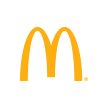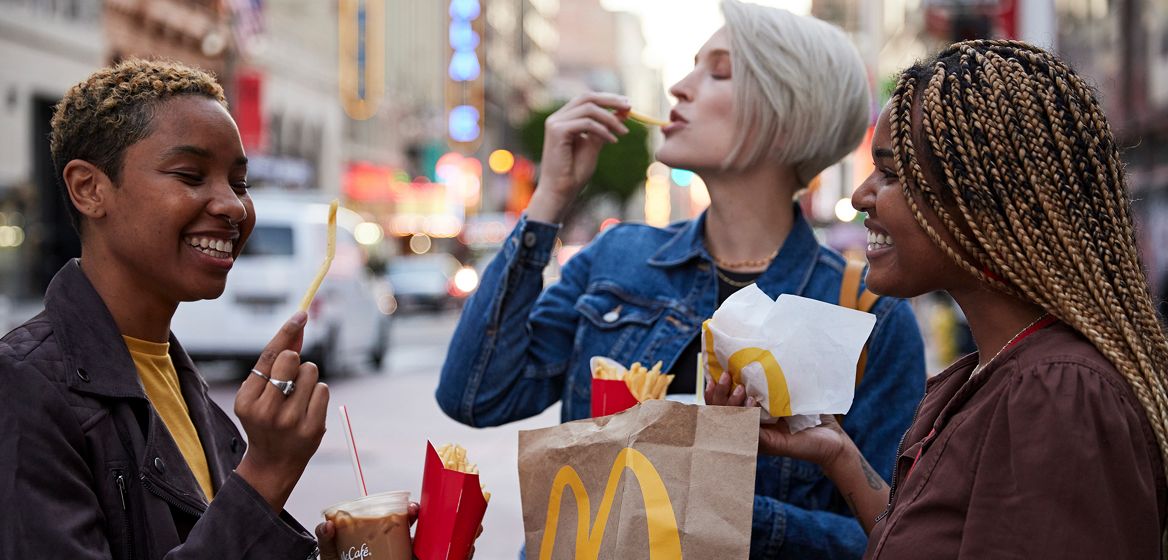5 Ways McDonald’s Is Making Its Packaging More Sustainable Around the World
July 20, 2022
No matter where you are in the world, McDonald’s packaging is instantly recognizable – whether it’s our iconic red fry box or the wrapper that keeps your Egg McMuffin toasty en route to work. And while our packaging plays an important role in helping us serve hot and delicious food quickly and safely, we also believe it’s our responsibility to help keep communities clean and protect the planet for future generations.
It’s why we’re working hard to achieve a circular economy: an endless loop that keeps materials and packaging in use rather than turning them into waste. To this end, we set the goal of sourcing 100% of our primary guest packaging from renewable, recycled or certified sources and to implement global and local solutions across our business to expand reduction and recycling of guest packaging by the end of 2025.
Bringing our goals to life
As much as we wish we could snap our fingers and achieve a circular economy overnight, it's more complicated than that – but we’re up for the challenge. To help us meet our ambitions, we remain laser-focused on our roadmap:
- Eliminate unnecessary packaging through ongoing innovation.
- Move away from virgin fossil fuel-based plastics in packaging and Happy Meal toys.
- Advance a circular economy by making it easier for customers to recycle and reduce waste.
- Increase the use of recycled materials to influence global demand.
- Team up with industry partners to increase our impact and work toward a circular economy together.
Big scale means big ideas
We believe that streamlining our packaging isn’t a one-size-fits-all solution – after all, McDonald’s operates in more than 100 countries worldwide. So, how does this kind of innovation come to life around the globe?
Many countries are experimenting by redesigning our most iconic products to eliminate waste. Take Latin American Franchisee Arcos Dorados, for instance: They’ve removed all lids and straws from cold drinks for dine-in customers. Our friends at McDonald’s Canada have switched to napkins that are 20% smaller and produced with 100% fiber.
We’re also exploring how we can increase our use of recycled materials while helping drive industry demand. In fact, we’re partnering with some of our peers as part of the Net Gen Cup Challenge to do just that. In some of our markets, you can find recycled content in fiber coffee, frappe, sundae and cold cups. Cool, right?
Of course, we’ve made plenty of friends along the way through meaningful partnerships with likeminded organizations like World Wildlife Fund, Keep America Beautiful and Closed Loop Partners. Because like our founder Ray Kroc used to say, “None of us is as good as all of us.”
Work in progress
With ambitious goals around sustainable packaging, you might be wondering how we're tracking. By the end of 2021, almost 83% of our primary guest packaging materials and nearly 97% of our primary fiber packaging were sourced from recycled or certified sources. By the end of 2021, we also offered guests the opportunity to recycle packaging items in an average of 35% of restaurants in our top 35 markets. Regions with more robust infrastructure are showing even greater progress. For example, on average, roughly 78% of our restaurants in McDonald’s largest European markets already provide guest packaging recycling.
As we continue to work toward our goal of reducing waste and transitioning to more sustainable packaging, keep an eye out for innovations happening at McDonald’s restaurants around the world – whether it’s reusable cups, cutlery made from compressed paper or our sharp-looking new McFlurry cups.
That’s just scratching the surface. Take a look at our 2021-2022 Purpose & Impact Reporting on Packaging, Toys and Waste to find out more about our goals and progress.
Information updated as of August 15, 2022

